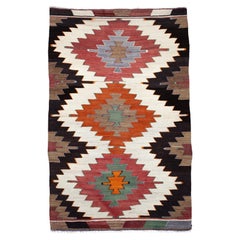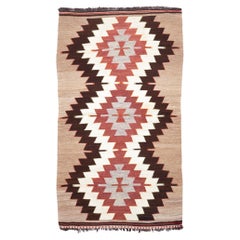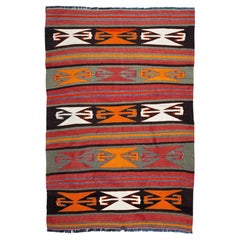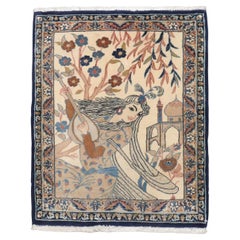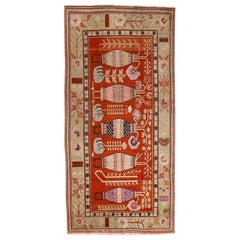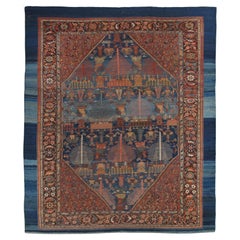Asian Rugs
Late 20th Century Kilim Asian Rugs
Wool, Cotton, Natural Fiber
Late 20th Century Kilim Asian Rugs
Wool, Cotton, Natural Fiber
Late 20th Century Kilim Asian Rugs
Wool, Cotton, Natural Fiber
Mid-20th Century Romantic Asian Rugs
Wool
1920s Art Deco Vintage Asian Rugs
Wool
Late 19th Century Bakshaish Antique Asian Rugs
Wool
21st Century and Contemporary Oushak Asian Rugs
Wool, Natural Fiber, Organic Material
Late 20th Century Kilim Asian Rugs
Wool, Cotton, Natural Fiber
Mid-20th Century Kilim Asian Rugs
Wool, Natural Fiber
Early 20th Century Kilim Asian Rugs
Wool, Natural Fiber
Early 20th Century Kilim Asian Rugs
Wool, Natural Fiber
Late 20th Century Oushak Asian Rugs
Wool, Cotton, Natural Fiber
21st Century and Contemporary Revival Asian Rugs
Wool, Natural Fiber, Organic Material
21st Century and Contemporary Mid-Century Modern Asian Rugs
Silk
2010s Kilim Asian Rugs
Wool, Natural Fiber
Mid-20th Century Oushak Asian Rugs
Wool, Natural Fiber
Early 20th Century Kilim Asian Rugs
Wool, Natural Fiber
21st Century and Contemporary Revival Asian Rugs
Wool, Natural Fiber, Organic Material
Mid-20th Century Kilim Asian Rugs
Wool, Natural Fiber
19th Century Sarouk Farahan Antique Asian Rugs
Wool
Mid-20th Century Kilim Asian Rugs
Wool, Natural Fiber
Late 20th Century Kilim Asian Rugs
Wool, Cotton, Natural Fiber
21st Century and Contemporary Revival Asian Rugs
Wool, Natural Fiber, Organic Material
Late 20th Century Kilim Asian Rugs
Wool, Cotton, Natural Fiber
Late 20th Century Kilim Asian Rugs
Wool, Natural Fiber, Cotton
Early 20th Century Kilim Asian Rugs
Wool, Natural Fiber
Early 20th Century Oushak Asian Rugs
Wool, Natural Fiber, Organic Material
Late 20th Century Kilim Asian Rugs
Wool, Natural Fiber
20th Century Folk Art Asian Rugs
Wool
2010s Kilim Asian Rugs
Wool, Natural Fiber
Mid-20th Century Kilim Asian Rugs
Wool, Natural Fiber
20th Century Folk Art Asian Rugs
Wool
Late 20th Century Kilim Asian Rugs
Wool, Natural Fiber, Organic Material
Mid-20th Century Oushak Asian Rugs
Wool, Natural Fiber
Mid-20th Century Kilim Asian Rugs
Wool, Natural Fiber
Early 20th Century Kilim Asian Rugs
Wool, Natural Fiber
Early 20th Century Kilim Asian Rugs
Wool, Natural Fiber
2010s Kilim Asian Rugs
Wool, Natural Fiber
Mid-20th Century Mid-Century Modern Asian Rugs
Wool
1970s Kilim Vintage Asian Rugs
Wool, Cotton
Late 20th Century Kilim Asian Rugs
Wool, Natural Fiber
Mid-20th Century Kilim Asian Rugs
Wool, Natural Fiber
Early 20th Century Oushak Asian Rugs
Wool, Natural Fiber
21st Century and Contemporary Revival Asian Rugs
Wool, Natural Fiber, Organic Material
Late 19th Century Oushak Antique Asian Rugs
Wool
21st Century and Contemporary Oushak Asian Rugs
Wool, Natural Fiber, Organic Material
2010s Kilim Asian Rugs
Wool, Natural Fiber
Mid-20th Century Kilim Asian Rugs
Wool, Natural Fiber
Mid-20th Century Oushak Asian Rugs
Wool, Natural Fiber
Early 20th Century Kilim Asian Rugs
Wool, Natural Fiber
21st Century and Contemporary Revival Asian Rugs
Wool, Natural Fiber, Organic Material
Mid-20th Century Folk Art Asian Rugs
Wool
21st Century and Contemporary Revival Asian Rugs
Wool, Natural Fiber, Organic Material
Mid-20th Century Kilim Asian Rugs
Wool, Natural Fiber
Early 20th Century Kilim Asian Rugs
Wool, Natural Fiber
Late 20th Century Kilim Asian Rugs
Wool, Natural Fiber
Early 20th Century Oushak Asian Rugs
Wool, Natural Fiber
20th Century Folk Art Asian Rugs
Wool
Late 20th Century Kilim Asian Rugs
Wool, Natural Fiber, Cotton
Early 20th Century Kilim Asian Rugs
Wool, Natural Fiber
